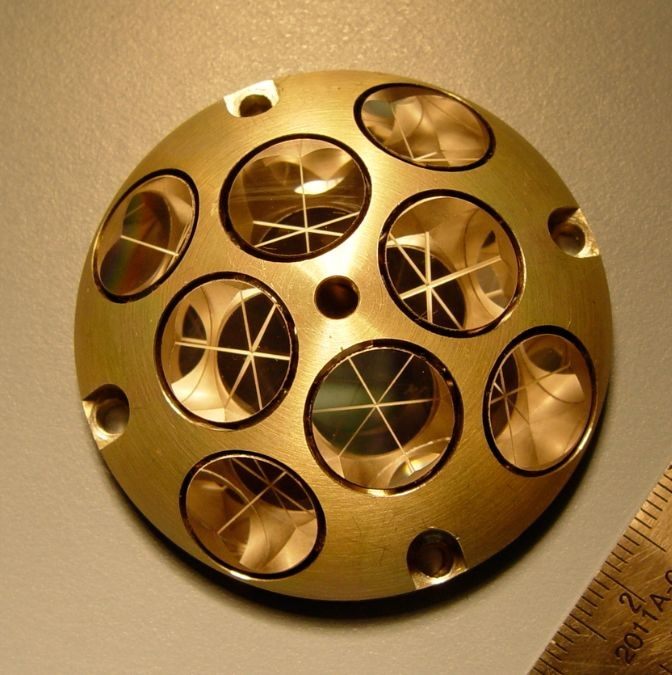In a first, NASA's Lunar Reconnaissance Orbiter (LRO) successfully ‘pinged’ India's Chandrayaan-3 Vikram lander on the Moon's surface on December 12, 2023. According to NASA, this successful experiment “opens the door to a new style of precisely locating targets on the Moon’s surface”.
This seemingly simple act - a laser beam transmitted from orbit and reflected back by a tiny device on the lander - holds immense significance for the future of lunar exploration.
Significance
 NASA’s Laser Retroreflector Array (LRA); Image: NASA
NASA’s Laser Retroreflector Array (LRA); Image: NASA
NASA explained that till now tracking the location of Earth-orbiting satellites from the ground is usually done using laser pulses directed toward the object and measuring the time it takes for the light to return. “But using the technique in reverse – to send laser pulses from a moving spacecraft to a stationary one to determine its precise location – has many applications at the Moon,” scientists said.
With this feat, NASA’s Laser Retroreflector Array (LRA) onboard the Chandrayaan-3’s Vikram lander has started serving as a location marker near the lunar south pole.
Also read: NASA’s X-59 Quiet Supersonic Aircraft That Can Travel Faster Than Sound, Key Details Here
ISRO said, “NASA’s LRA on Chandrayaan-3’s Vikram lander will continue to serve as a long-term geodetic station and a location marker on the lunar surface, benefitting current and future lunar missions.”
"We've shown that we can locate our retroreflector on the surface from the Moon's orbit," said Xiaoli Sun, who led the team at NASA's Goddard Space Flight Center, that developed the retroreflector on Vikram as part of a partnership between NASA and Indian Space Research Organization (ISRO).
Also read: What Is NISAR Mission? ISRO-NASA Satellite To Study Earth’s Cryosphere, Know Key Details
How did NASA’s Retroreflector ping Chandrayaan-3’s Lander?
The experiment was carried out at 1:30 am Indian Standard Time (3 pm EST) on December 12, 2023. According to the press release, NASA’s Lunar Reconnaissance Orbiter (LRO) pointed its laser altimeter instrument toward Vikram lander.
As per NASA, the lander was 62 miles, or 100 kilometers, away from LRO, near Manzinus crater in the Moon’s South Pole region, when LRO transmitted laser pulses toward it. After the orbiter registered light that had bounced back from a tiny NASA retroreflector aboard Vikram, NASA scientists knew their technique had finally worked.
Also read: Which Is The Biggest Volcano In The Solar System And Why?
Only 2 inches, or 5 centimeters, wide, NASA's retroreflector, called a Laser Retroreflector Array (LRA), has eight quartz-corner-cube prisms set into a dome-shaped aluminum frame.
The device is simple and durable. It requires neither power nor maintenance. It can last for decades. Its configuration allows the retroreflector to reflect light coming in from any direction back to its source, NASA said.
Applications of retroreflectors
Retroreflectors can be used for many applications in science and exploration. They have been in use at the Moon since the Apollo era. By reflecting light back to Earth, the suitcase-size retroreflectors revealed that the Moon is moving away from our planet at a rate of 1.5 inches (3.8 centimeters) per year.
This new generation of tiny retroreflectors has even more applications than their larger predecessors. On the International Space Station, they are used as precision markers that help cargo-delivery spacecraft dock autonomously.
In the future, they could guide Artemis astronauts to the surface in the dark, for example, or mark the locations of spacecraft already on the surface, helping astronauts or uncrewed spacecraft land next to them.
Comments
All Comments (0)
Join the conversation